James E. Rhoads (1828-1895)
First President and Original Board of Trustees Member
Philadelphia Quaker
A well-connected Quaker leader, James E. Rhoads was known especially for his involvement in educational and assimilationists efforts among free and formerly enslaved people, as well as Indigenous peoples. In that work, he revealed a strong commitment to the Quaker Christian civilizing mission and a belief in its white supremacist principles. Rhoads strongly supported M. Carey Thomas, advocating for her appointment as Dean of the Faculty in 1883. He helped to cultivate a vision for Bryn Mawr as an academic institution of the highest order, despite strong opposition from Orthodox Quakers who censured Bryn Mawr for providing a worldly education. Due to declining health, Rhoads resigned from his position as College President in the early 1890s, but remained a Professor of Ethics and President of the Board of Trustees. He endorsed M. Carey Thomas as his successor, and she served as President for over two decades (1894-1920).
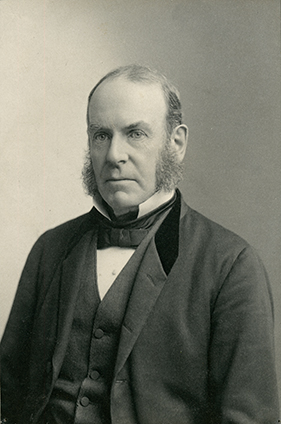
Albert K. Smiley (1828-1912)
Original Board of Trustees Member
Rhoads Island Quaker
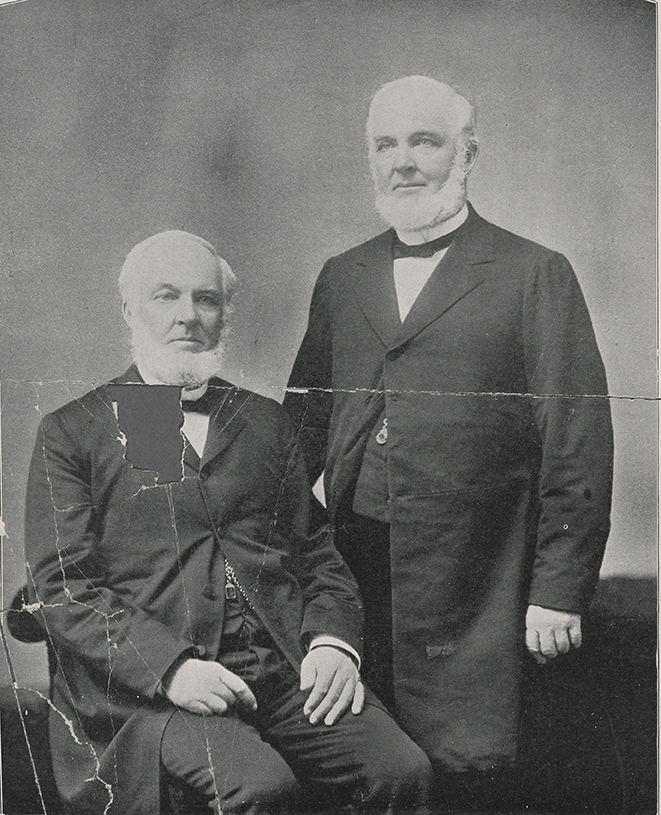
Albert Keith Smiley (1828-1912) graduated from Haverford College (1848) and pursued a career in educational institutions for thirty years as a teacher and administrator. In 1879 he was appointed to the Board of Indian Commissioners by President Rutherford B. Hayes. Beginning in 1885, Smiley organized and hosted conferences at his summer estate at Lake Mohonk, NY, that discussed the affairs of Indigenous and formerly enslaved peoples. The Dawes Severalty Act of 1887 was crafted at Smiley’s estate. It authorized the government to dispossess Indigenous peoples of their lands, destroying their social cohesion and imposing a division of property that benefitted white homesteaders.
James Carey Thomas (1833-1897)
Original Board of Trustees Member
Baltimore Quaker
With his cousin, Francis T. King, Thomas convened the first Quaker Educational Conference in 1877. They sought to give young Quakers a firm religious and moral footing, while equipping them for a public life. Both men and women were encompassed in this goal. Thomas helped secure his daughter Martha’s admission as the first female student at John Hopkins and her eventual appointment as Dean of the Faculty at Bryn Mawr.
James Carey Thomas was a Quaker doctor from a long line of Baltimore physicians. He graduated from Haverford College in 1852. Despite personal financial troubles, he volunteered on many educational boards, including those of Johns Hopkins University, Haverford, and Bryn Mawr. He was driven by the conviction that Quakers had an urgent duty to increase their influence on American society.
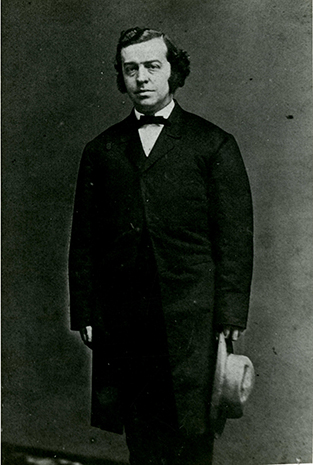
Mary Whitall Thomas (1835-1888)
Philadelphia (later Baltimore) Quaker
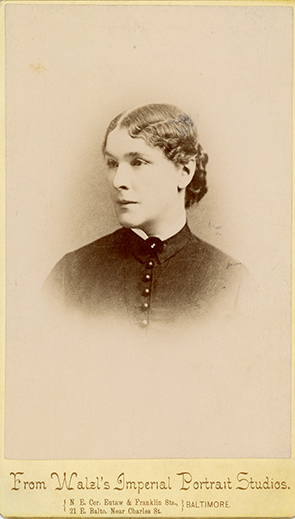
Born to Philadelphian Quakers who made a family fortune in the glass industry, Mary Whitall Thomas was deeply devout. She led an unusually public life for her time, working to promote the interests of the poor, women, and Black people through leadership roles in diverse philanthropic organizations, including as President of the Woman’s Christian Temperance Union. She was M. Carey Thomas’ mother, and the Whitall family’s fortune funded much of M. Carey Thomas’ education. Mary Whitall Thomas often worked behind the scenes to promote her daughter’s interests and influence.
Mary Garrett (1854-1915)
Baltimore Presbyterian
Mary Garrett’s father was President of the Baltimore & Ohio Railroad. At his death in 1884, she inherited one-third of his vast estate – a share equal to each of her brothers – making her one of the wealthiest woman in the United States. Garrett dispersed her fortune generously, supporting diverse organizations and movements, especially those serving women’s education and suffrage. Although she did not pursue a formal education past the secondary level, she was a major benefactor of Bryn Mawr, bankrolling the College during the presidency of M. Carey Thomas. Garrett was one of the few non-Quakers to exercise influence on the early development of Bryn Mawr. A plaque in the Cloisters of Old Library commemorates her contributions.
In their later adulthood, Mary Garrett and M. Carey Thomas lived together in the Deanery on Bryn Mawr’s campus. Garrett funded over a decade of extravagant renovations to their residence. At her death, Garrett left the entirety of her remaining fortune to M. Carey Thomas.
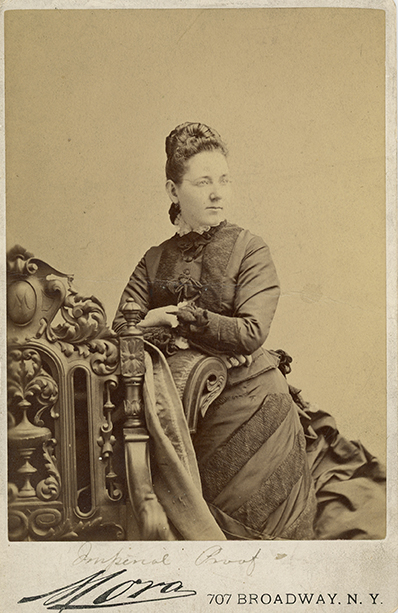
Learn more about the Deanery and its extravagant appointment
John B. Garrett (1836-1924)
Original Board of Trustees Member
Philadelphia Quaker
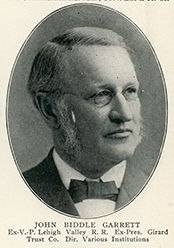
Not to be confused with John W. Garret, father of Mary Garrett, John B. Garrett was the Vice President of the Lehigh Railroad and resided in Rosemont. Like other members of the Board of Trustees, he was active in organizations dedicated to Indigenous peoples and Freedmen and women. In 1869, he was a founding member of the Associated Executive Committee of Friends on Indian Affairs. Despite opposition from other white residents, Garrett aided in establishing the African Methodist Episcopal (AME) Church in Bryn Mawr, which still operates today. Although he actively supported his African American neighbors, Garrett seems never to have raised the question of admission for Black women to Bryn Mawr.

